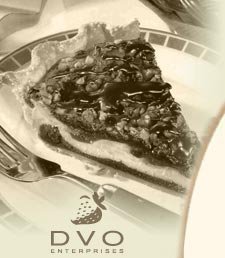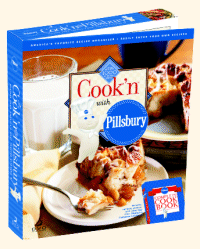
|
Never miss another recipe... Sign up for our free monthly newsletter today!
Subscribing will not result in more spam! I guarantee it! NEWSLETTER
• Current Issue• Newsletter Archive • Sign Up Now 
Cook'n with Betty Crocker 
Cook'n with Pillsbury 
Cook'n with a Taste of Home 
Cook'n in Italy 
Cook'n in Mexico |
 |
The Skinny on Fat |
|
Print this Recipe The Skinny on HDLs and LDLs Cholesterol is shuttled around the body by substances called low-density lipoproteins (LDLs). LDLs carry cholesterol from the liver (where it is formed) to cells throughout the body. LDLs can deposit excess amounts of cholesterol on the walls of various arteries in your body. These deposits are a form of plaque, which over time can build up, narrow the openings inside arteries and lead to heart disease. This action has earned LDLs the title “bad cholesterol.” Another carrier of cholesterol in the blood is called high-density lipoproteins (HDLs). HDLs are scavengers. They can carry excess cholesterol away from the artery walls and back to the liver for reprocessing or removal from the body. HDLs help to prevent cholesterol buildup and are therefore referred to as “good” cholesterol. Kids and Fat When it comes to a low-fat eating plan young children are the exception to the rule. Children younger than age two should not have the amounts of fat and cholesterol in their diets restricted. Both fat and cholesterol are needed for growth and development, including brain development. Because of the small size of their stomachs, babies and kids younger than two are limited in the amount of food they can eat, and fat helps ensure they satisfy their calorie needs. As a child grows and develops between the ages of two and five, it’s okay to gradually decrease the fat in their diet. Replace some of the calories from fat with lower fat, nutrient-dense foods such as grains, fruits, vegetables, low-fat dairy products and other protein-rich sources. By the time a child reaches age five, his or her eating style should follow the same Dietary Guidelines as older children and adults, limiting fat to no more than 30 percent of total calories and saturated fat to no more than 10 percent of total calories. Higher-fat foods can still be part of a child’s healthy diet. They add flavor and variety to a balanced diet and fuel the growth of active kids. The key is moderation and to watch the total fat in food choices over a period of several days, weeks and months. Fat Trimming Tips Eat fewer high-fat foods. Eating less visible fat, such as salad dressings, margarine and sour cream, helps. Keep added fats and oils to 5 to 8 teaspoons per day. Try reduced-fat products for these foods. Trim visible fat from meat, and remove the skin from chicken and turkey before eating. Cutting back on foods high in hidden fat, such as chips, high-fat cheeses and many bakery goods is important too. Eat smaller portions. As portions grow, so to does their fat content. Skip the super-size meals and snacks, and choose normal-size servings. Cook lean. Broil, bake, roast, grill, poach, steam, stew or even microwave foods whenever possible. You can stir-fry, too, if you use small amounts of unsaturated oils, such as canola or safflower oil. Use nonstick cookware and cooking spray to lessen the amounts of fat needed in cooking. Broths and vegetable juices are good sauté substitutes for oil, shortening and margarine. Choose meatless meals at least twice each week. Limiting the amount of meat, fish and poultry you eat can help reduce fat, particularly saturated fat, while increasing fiber and complex carbohydrates. Trade meats for dried beans and peas, grains, vegetables and fruits. Go easy on the margarine, mayonnaise and cream sauces. Select chicken, turkey or fish. Light-meat chicken and turkey are naturally low in fat, especially if you remove the skin. Most fish is also very lean. Even higher-fat fish, such as salmon, is as lean or leaner than poultry and lean beef. Some fish also have the added benefit of omega-3 fatty acids. Use low-fat or fat-free dairy products. Many milk products contain a great deal of fat, especially if they are made with whole milk or cream. Choose from the many low-fat and fat-free dairy products available, such as low-fat yogurts, cheese, puddings, milk and ice cream. From "Betty Crocker's Low-Fat, Low-Cholesterol Cooking Today." Text Copyright 2005 General Mills, Inc. Used with permission of the publisher, Wiley Publishing, Inc. All Rights Reserved. This recipe comes from the Cook'n collection. Try Cook'n for FREE! Here’s to your health Fat Facts Understanding Cholesterol Other Important Nutrients Putting It All Together Reading a Nutrition Label Go Slow For Success Test Your Health IQ The Skinny on Fat Cholesterol Trimming Tips Nutritional Comparison |
|
|
Affiliate Program | Privacy Policy | Other Resources | Contact Us
© 2008 DVO Enterprises, Inc. All rights reserved. Sales: 1-888-462-6656 |

